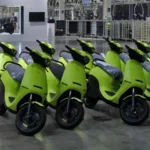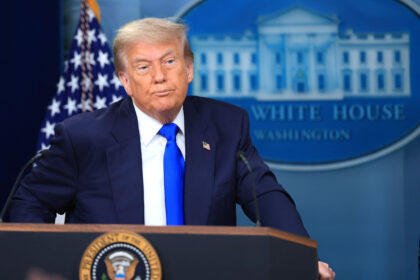The Vue Times – It is a historic day in the history of Indian maritime because the Mumbai International Cruise Terminal (MICT) which has been a long-awaited project was inaugurated by Prime Minister Narendra Modi at the Ballard Pier location adjacent to the well-known Gateway of India. To a city that has been the first beat to the trade, culture and recent economic upsurge in India, this debut is not merely a new edifice, but a symbol of the India aspiration in making a mark in the global cruise tourism cardboard.
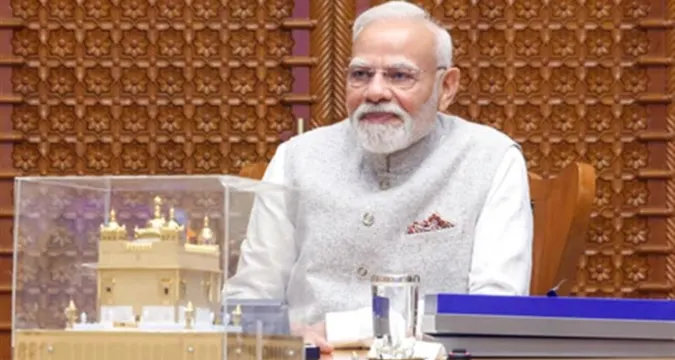
The opening event, which was attended by international cruise operators, industry stakeholders, state leaders, and thousands of Mumbaikars, has already become one of the most-watched events of the week, social media has been flooded with hashtags such as #CruiseIndia, #MumbaiTerminal, #ModiInauguration, and #GatewayToTheWorld.
Mumbai: From Colonial Port to Global Cruise Hub
To appreciate the gravity of this situation, it is necessary to consider the history of development of Mumbai. Previously dominated by a clique of seven fishing islands and then under the Portuguese and the British, the city emerged to the forefront, when the British made it into one of the most active trading ports within the Asian region.
The location of the new terminal, Ballard Pier, was poised in a location that has always had historical importance. It had been decades long the gateway of the ships that brought traders, soldiers, migrants and tourists into India. During the colonial period, it was the dynamic entrance of the gateway of the Raj; however, after independence; it has turned to signify the expansion of foreign commerce in India.
In 2025, the same pier is redefined to become a global cruise terminal, a crazy amalgamation of the past and future, and as a showing of the fact that Mumbai is the front city of India into the world.
Inside the Mumbai International Cruise Terminal
The terminal is not less marvelous. The establishment, which covers 2 lakh square feet, is modern and smoothly designed to be distinctly Indian. Based on the Art Deco legacy of Mumbai and the oceanic projections, the terminal presents the majesty of arriving by sea to any traveler who comes directly to the terminal.
Key Features Include:
- Capacity: it is arranged to carry out 200 ships each year, and the number of passengers will be 1 Million annually, establishing Mumbai as one of the leading cruise centers in Asia.
- Smart Passenger Processing: Biometric check-ins through artificial intelligence at the immigration desk and seamless baggage management guarantee fast travel times, which will not take hours to be cut by minutes.
- Luxury Confinements: Multi-tasty restaurants that display parenthesis tastes of Indian coast, out shopping boutiques with handcrafted local products, entertainment halls and premium lounges serving international passengers.
- Eco Friendly Design: Air conditioning that uses less energy, rain harvest system and recycling plants are some of the environmentally friendly designs which are consistent with India’s commitment of being pledged to greener infrastructure.
- Security and Safety: A multi-layered system involving digital boarding passes, intelligent surveillance, and maritime security rules that are comparable to those on a global level.
The facility is not a transit venue but a destination in its own right, as the people in charge have made the venue to give the guests the Indian hospitality even before they step in it.
Why Cruise Tourism Matters for India
India has been underrepresented in the world cruise tourism industry. Whereas such opportunities have been utilized by countries such as Singapore, the United Arab Emirates as well as Mediterranean countries, India with the range of 7,500 km coastline, 1,382 islands and rich culture has barely exploited this potential.
Cruise tourism is not only a luxury holiday, but it is moving the local economy. The ports are transformed into centers of job and cities around them witness rises in hotels, restaurants, shopping and cultural tourism. The presence of one cruise liner dock can stimulate the local economy by millions of dollars in a few days.
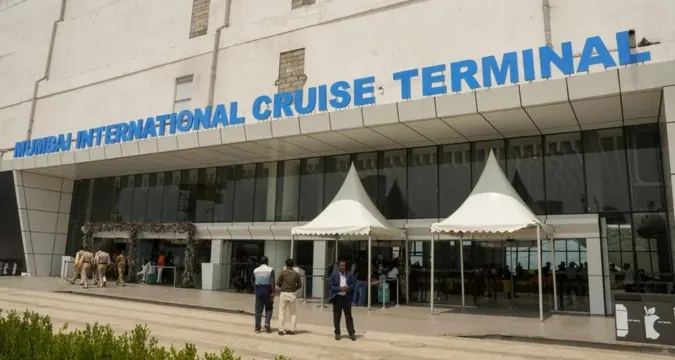
The government predicts that the Mumbai International Cruise Terminal will be able to:
- Created 50,000 direct and indirect employment opportunities during its initial years of operation.
- Expand the cruise passenger traffic in India to about 0.5 to 2 percent of international by 2035.
- Enhance the vision of a stronger India, Sagarmala and Viksit Bharat 2047 where national development is anchored on maritime trade and tourism.
Modi Government’s Maritime Push
The cruise terminal is the crown part of the Sagarmala Programme, which was introduced to modernise ports and exploit the blue economy. Prime minister Modi has never missed a chance to promote the idea that the best thing that would happen to India in the future is its sea as it was previously the case when Indian ships ruled the trade routes in the Indian Ocean.
In his address today, PM Modi highlighted:
“Mumbai has always been the heartbeat of India’s trade. With this cruise terminal, it will also become the heartbeat of global tourism. This project is not only for Mumbai; it is for every Indian who dreams of seeing our nation recognized as a global power in every sector.”
The fact that Modi inaugurated the terminal himself is a personal message as well to his government that it is committed to growing through infrastructure. Having had the highest foreign investments and tourist arrivals in India ever in 2025, this launch can not be any later because it would be used to project India as a highly modern and a globally competitive country.
Economic Ripples Beyond Mumbai
Although the terminal is situated in Mumbai, its merits are felt much further than Maharashtra. The docking of cruise liners in Mumbai will establish new channels of communication between Goa, Kochi, Lakshadweep, Chennai and as far as the Andaman Island, which will attract more domestic and foreign tourists in India.
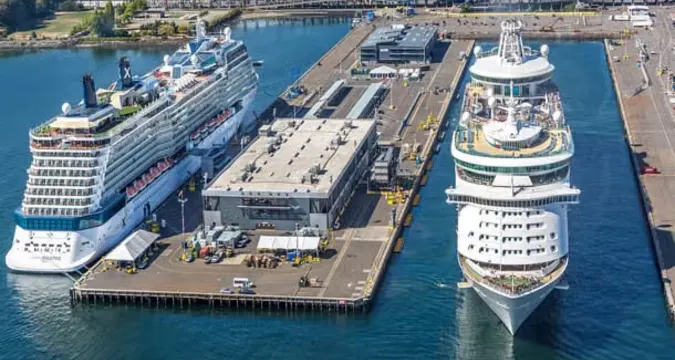
Dye is set to prepare its local businesses. Travel firms are designing tours dubbed Cruise plus India, which combine a luxury cruise with cultural tourism in Rajasthan, wildlife tourism in Madhya Pradesh or Yoga holiday in Kerala. Airlines are also providing incentives to bring connection deals to cruise travelers to domestic ports. Terminals are also an opportunity for small-scale artisans; the terminals give them retail space where they can display Indian handicrafts to visitors around the world.
Public Reactions and Social Buzz
The people of Mumbai have responded proudly and expectedly. In a city that has been repeatedly labeled as having an overstrained infrastructure, the cruise terminal is a cool account of growth and innovation.
Thousands of posts presented on social media emphasize the architectural magnificence and prospects of the edifice not only economically but emotionally as well. The affordability of regional cruises is compelling young travelers particularly of the rising middle-income in India who are getting enthusiastic with the cost-effectiveness of adventures previously inaccessible to most Indians but now affordable.
According to insiders in the industry, the middle population in India is projecting 600 million citizens by 2030 out of which many would aspire to acquire premium travel experiences. It is also not only the turnover terminal that handles foreign tourists but is also the portal through which the Indians can visit their own coasts in a manner that is classy.
International Spotlight: Competing with Global Giants
Cruise tourism is mostly controlled in big cities such as Miami, Barcelona, and Singapore around the world. The Indian joining this league is an indicator of strategic desire. The inauguration was reported internationally by media sources like The New York Times, The Guardian and Straits Times among others as India seeks to reform the south Asian map of the sea.
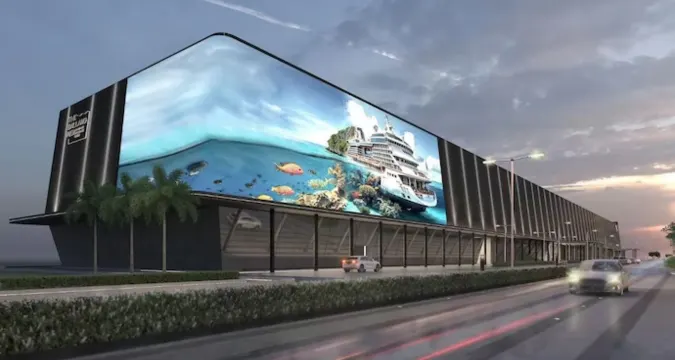
Other foreign cruise lines, such as Royal Caribbean, Carnival and Costa Cruise lines have already indicated interest in increasing their India programs. Officials briefly imply there are talks in the pipeline to make Mumbai a domestic port of some international liners – a step that would eventually make the Indian port radically visible as a cruise-destination.
From a geopolitical perspective, MICT enhances the Indo-Pacific presence of India, along with its trade ports and naval bases. It strengthens the slogan that India is not merely a security actor in the region but also a soft power in the tourism and cultural fronts.
Challenges Ahead
Although the celebrations are in place, experts warn that the hurdles still exist:
- Considerable Price: The cost of cruise packages is still high to the major population of India.
- Infrastructure Evaluating Infrastructure Other than ports: Road, metro, and hotel infrastructure need to be speeded up with increasing demand.
- Environmental Issues: Cruise tourism has been accused of an environmental footprint; India should be sustainable.
- Entry Barriers: Regional centers in cruise markets such as Singapore and Dubai already command a segment of the Asian cruise market.
When these barriers are thought of, planned over the long-term, India could not just be a participant in the cruise tourism business but also be at the frontline.
Looking to the Future
The Mumbai International Cruise Terminal is not all that. The government has already suggested replacing similar facilities in Chennai, Kochi, Goa and Visakhapatnam and to form a chain of global cruise terminals along coasts of India.

Suppose one could travel on a cruise in Mumbai and step out at Goa and enjoy Goan beaches, at Kochi and enjoy back waters, at Chennai and enjoy temples, but without navigating the sea. In conjunction with foreign routes linking Sri Lanka, Maldives and Southeast Asia, this vision might turn India into the cruise capital of the Indian Ocean.
A Gateway to the World
With Prime Minister Modi cutting the ribbon of the Mumbai International Cruise Terminal today it is not only a ceremony of opening up a new era in Indian tourism and Indian trade, but also of opening up a building.
In the case of Mumbai, it represents a reassertion of the fact that it is considered the global entrance to India. To India, it is not only a statement of ambition but also of modernization, innovation, even introduction of the world not only by airports and highways but by its sea too.
This is one of the projects which address one even greater truth: India is not satisfied with the gradual changes anymore. It is acquiring milestones that will set it squarely in the mid plane of the global arena.
And when the earliest vessels arrive at this shiny terminal, not just in India but the world otherwise also, the passengers will not necessarily only view the beauty of the coast of Mumbai but also get a glimpse of the future of India – daring, self-assured, and prepared to be launched into the world.





